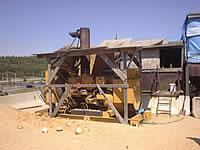Basic Information for Stationary Engines
 What Are Stationary Internal Combustion Engines?
What Are Stationary Internal Combustion Engines?
Stationary internal combustion engines use pistons that alternatively move back and forth to convert pressure into rotating motion. They're commonly used at power and manufacturing plants to generate electricity and to power pumps and compressors. They are also used in emergencies to produce electricity and pump water for flood and fire control. The U.S. Environmental Protection Agency (EPA) has recently finalized new air quality regulations that place requirements on owners and operators of a wide variety of stationary engines.
Why Does EPA Regulate Stationary Engines?
Stationary internal combustion engines are common combustion sources that collectively can have a significant impact on air quality and public health. The air toxics emitted from stationary engines include formaldehyde, acrolein, acetaldehyde and methanol. Exposure to these air toxics may produce a wide variety of health difficulties for people including irritation of the eyes, skin and mucous membranes, and central nervous system problems. Engines also emit the conventional air pollutants created when fuel is burned including carbon monoxide (CO), nitrogen oxides (NOx), volatile organic compounds (VOCs), and particulate matter (PM). The health effects of these pollutants include a range of respiratory (breathing) issues, especially asthma among children and seniors.
